
Obituary of Founding JMMM Editor Arthur J. Freeman
June 06, 2016 It is with a heavy heart that we must inform you of the death of JMMM's Founding Editor, Arthur J. Freeman, on June 7, 2016. He will be sorely missed for his scholarship, mentorship and friendship. Professor Freeman launched the Journal of Magnetism and Magnetic Materials in 1975 with North Holland (Elsevier) as publisher. The inaugural Editorial Board of the Journal read like a who's who in the %uFB01eld. Even so, launching a new journal is no easy task. It requires synergy between Editor and Publisher. Prior to this Professor Freeman had a false start with his International Journal of Magnetism, which was only published between 1971 and 1974 by a different publisher.
It is with a heavy heart that we must inform you of the death of JMMM's Founding Editor, Arthur J. Freeman, on June 7, 2016. He will be sorely missed for his scholarship, mentorship and friendship. Professor Freeman launched the Journal of Magnetism and Magnetic Materials in 1975 with North Holland (Elsevier) as publisher. The inaugural Editorial Board of the Journal read like a who's who in the %uFB01eld. Even so, launching a new journal is no easy task. It requires synergy between Editor and Publisher. Prior to this Professor Freeman had a false start with his International Journal of Magnetism, which was only published between 1971 and 1974 by a different publisher.Will the MPI Inventors Get the European Inventor Award 2017 ?
May 04, 2016
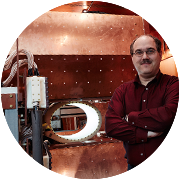 All of you probably know Bernhard Gleich, Jürgen Weizenecker and team who invented the Magnetic Particle Imaging (MPI) technique. We now have a chance of helping them to win the European Inventor Award 2017 in the industry section. Please go to
All of you probably know Bernhard Gleich, Jürgen Weizenecker and team who invented the Magnetic Particle Imaging (MPI) technique. We now have a chance of helping them to win the European Inventor Award 2017 in the industry section. Please go to
http://www.epo.org/learning-events/european-inventor/popular-prize.html
and vote for them. Would be great if we can help them to win this prestigious award!
And by the way, the video that they made about MPI and the possibilities of this technique in the future is very impressive, well worth the 6 minutes it takes to watch it!
Smart Shoe to Reduce Foot Ulcers
April 15, 2016
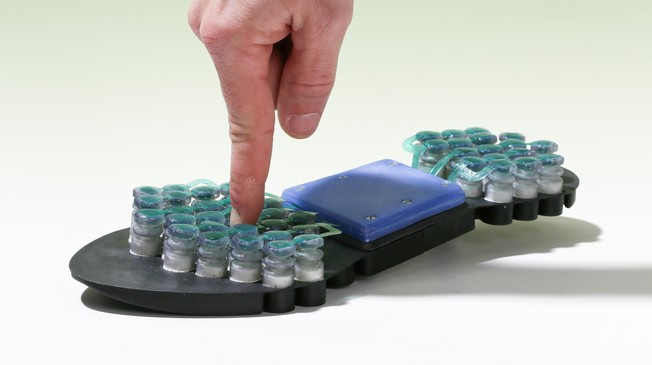 EPFL researchers together with the University Hospital in Geneva have developed a shoe sole with valves that electronically control the pressure applied to the arch of the foot, aiming at preventing foot ulcers commonly caused by diabetes. The sole has around 50 small electromagnetic valves filled with magnetorheological material. The viscosity of the material, which is made up of suspended iron microparticles, can be controlled by applying a magnetic field. The particles react immediately and align themselves with the field, causing the material to change from liquid to solid state in a fraction of a second. The system should not only help the wounds heal quickly but also prevent the onset of new ulcers. Every year, 250'000 diabetics have a leg amputated in Europe alone, mainly because of foot ulcers.
EPFL researchers together with the University Hospital in Geneva have developed a shoe sole with valves that electronically control the pressure applied to the arch of the foot, aiming at preventing foot ulcers commonly caused by diabetes. The sole has around 50 small electromagnetic valves filled with magnetorheological material. The viscosity of the material, which is made up of suspended iron microparticles, can be controlled by applying a magnetic field. The particles react immediately and align themselves with the field, causing the material to change from liquid to solid state in a fraction of a second. The system should not only help the wounds heal quickly but also prevent the onset of new ulcers. Every year, 250'000 diabetics have a leg amputated in Europe alone, mainly because of foot ulcers.
Magnetic Nanoeclipse
February 04, 2016
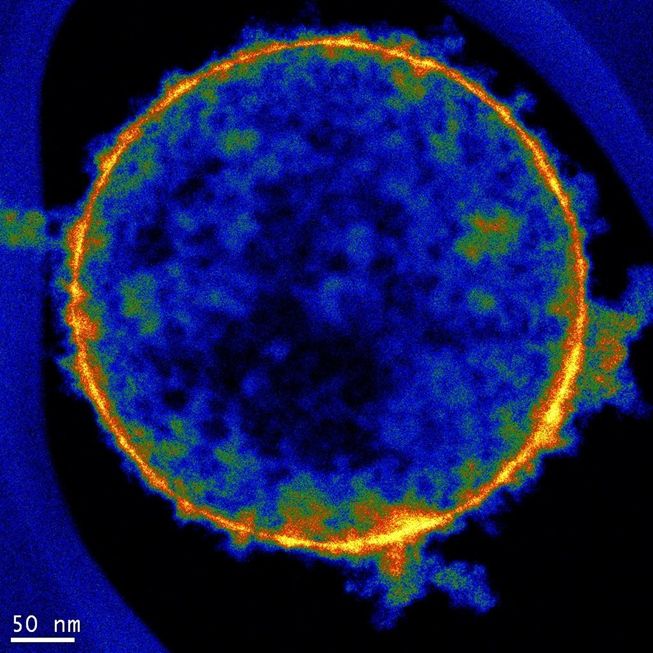 This fiery ring is actually a layer of iron oxide on a 500-nm-wide silicate particle. Researchers at the University of Texas, Dallas, created this image while using transmission electron microscopy to look at the distribution of iron oxide inside the nanoshell; brighter colors in the image represent higher concentrations. The nanoshells are being developed as a contrast agent for real-time Doppler imaging of tumors during surgery (Adv. Funct. Mater. 2015, DOI: 10.1002/adfm.201500610). This image won a 2015 scientific image contest put on by JEOL, an imaging and spectroscopic instrument maker.
This fiery ring is actually a layer of iron oxide on a 500-nm-wide silicate particle. Researchers at the University of Texas, Dallas, created this image while using transmission electron microscopy to look at the distribution of iron oxide inside the nanoshell; brighter colors in the image represent higher concentrations. The nanoshells are being developed as a contrast agent for real-time Doppler imaging of tumors during surgery (Adv. Funct. Mater. 2015, DOI: 10.1002/adfm.201500610). This image won a 2015 scientific image contest put on by JEOL, an imaging and spectroscopic instrument maker.
Ultralow Power Computing with Nanomagnets
February 03, 2016Computers perform complex calculations using billions of tiny electronic switches called transistors, which are organized into circuits and memory. Replacing these transistors with magnetic switches could enable more energy-efficient computers. Magnets have shown their worth in energy-efficient memory technologies, but they haven’t been used for processing. Researchers have now demonstrated that this is possible, combining low-power magnetic switches to perform a simple information processing step (Nano Lett. 2016, DOI: 10.1021/acs.nanolett.5b04205).
On a computer chip, each transistor can be switched between an on and off state, encoding a 0 or a 1—known as a bit. Nanomagnets can be switched between two states, too. One way to do this is to apply an electric field to flip the magnetic field’s orientation, but that takes 1,000 times as much energy as switching an electronic transistor, says Jayasimha Atulasimha, a mechanical engineer at Virginia Commonwealth University.
But another approach to switching the nanomagnet’s field is to apply a mechanical stress. This has been used to demonstrate magnet-based computer memory. Putting the magnets under strain to do the switching requires just one-hundredth the energy of a conventional transistor.
Atulasimha’s group wanted to demonstrate that these low-power, strain-gated nanomagnets could be used for information processing, not just memory. So Atulasimha and colleagues made a device that uses multiple nanomagnets to carry out a simple information processing problem. They deposited cobalt disks about 200 nm across onto a 0.5-cm-thick layer of a piezoelectric material called PMN-PT. A small electric field causes the piezoelectric layer to expand or contract, depending on the design. This pulls on or compresses the nanomagnet, changing its shape slightly, and flips the orientation of the magnetic field. Turning off the field flips it back.
The group used a chain of three nanomagnets to make a basic logic device called a NOT gate, one of the essential elements for doing digital computation. It’s nowhere near the full complement of logic operations needed to make a computer, but an important first step. Their magnetic logic device uses about 450 attojoules per operation. The researchers calculate that future systems using smaller nanomagnets and a thinner piezoelectric layer would use only 1 attojoule per operation.
Magnetically Guided Therapy to Heal Arterial Blood Vessel Walls
January 28, 2016
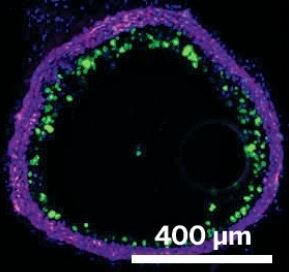 A technique that combines gene therapy and magnets could someday provide a new tool for treating cardiovascular disease, which puts millions of lives at risk every year. Prof. Daniela Wenzel et al. at the University of Bonn have produced cells that carry magnetic nanoparticles linked to a therapeutic gene. With an external magnet to direct the cells, the researchers used them to repair damaged arteries in mice (ACS Nano 2015, DOI: 10.1021/acsnano.5b04996).
A technique that combines gene therapy and magnets could someday provide a new tool for treating cardiovascular disease, which puts millions of lives at risk every year. Prof. Daniela Wenzel et al. at the University of Bonn have produced cells that carry magnetic nanoparticles linked to a therapeutic gene. With an external magnet to direct the cells, the researchers used them to repair damaged arteries in mice (ACS Nano 2015, DOI: 10.1021/acsnano.5b04996).
The researchers packaged genes coding for a green fluorescent protein and a nitric oxide-synthesizing enzyme within a viral vector, commonly used to deliver genetic material into cells. They linked the vectors to magnetic, silica-iron oxide nanoparticles, and loaded the vector-nanoparticle combo into endothelial cells. The researchers then injected these engineered cells into the carotid arteries of mice where the endothelial cells within those vessels had been removed. In half of the animals, they placed a magnet over the treatment site for 30 minutes. Two days later, the arteries of animals exposed to magnets showed green fluorescing cells attached to their inner surfaces, covering at least half of the circumference. In the other animals, blood flow had swept the introduced cells out of the arteries and deposited them in the brain.
Isometric force measurements on removed carotid arteries showed that the magnetically treated arteries were able to contract and expand, while the untreated arteries could not, showing that the grafted cells were doing their job producing nitric oxide.
We Are Now the Magnetic Carrier Society
January 27, 2016In order to organize our 2-yearly conferences in the proper way, we decided to found the Magnetic Carrier Society. So since today, January 27, 2016, we are a legal entity in British Columbia, Canada. The purpose is simply to support research in the magnetic particle field and organize every 2 year an International Conference on the Scientific and Clinical Applications of Magnetic Carriers.

Magnetic Hyperthermia Still an Enigma
January 07, 2016
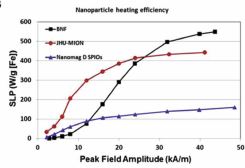
The influence of internal nanoparticle (intracore) magnetic domain structure on relaxation remains unexplored. Within the context of potential biomedical applications, this study focuses on the dramatic differences observed among the specific loss power of three magnetic iron oxide nanoparticle constructs having comparable size and chemical composition. Analysis of polarization analyzed small angle neutron scattering data reveals unexpected and complex coupling among magnetic domains within the nanoparticle cores that influences their interactions with external magnetic fields. These results challenge the prevailing concepts in hyperthermia which limit consideration to size and shape of magnetic single domain nanoparticles.
For more information, check out our Archives.
September 2017
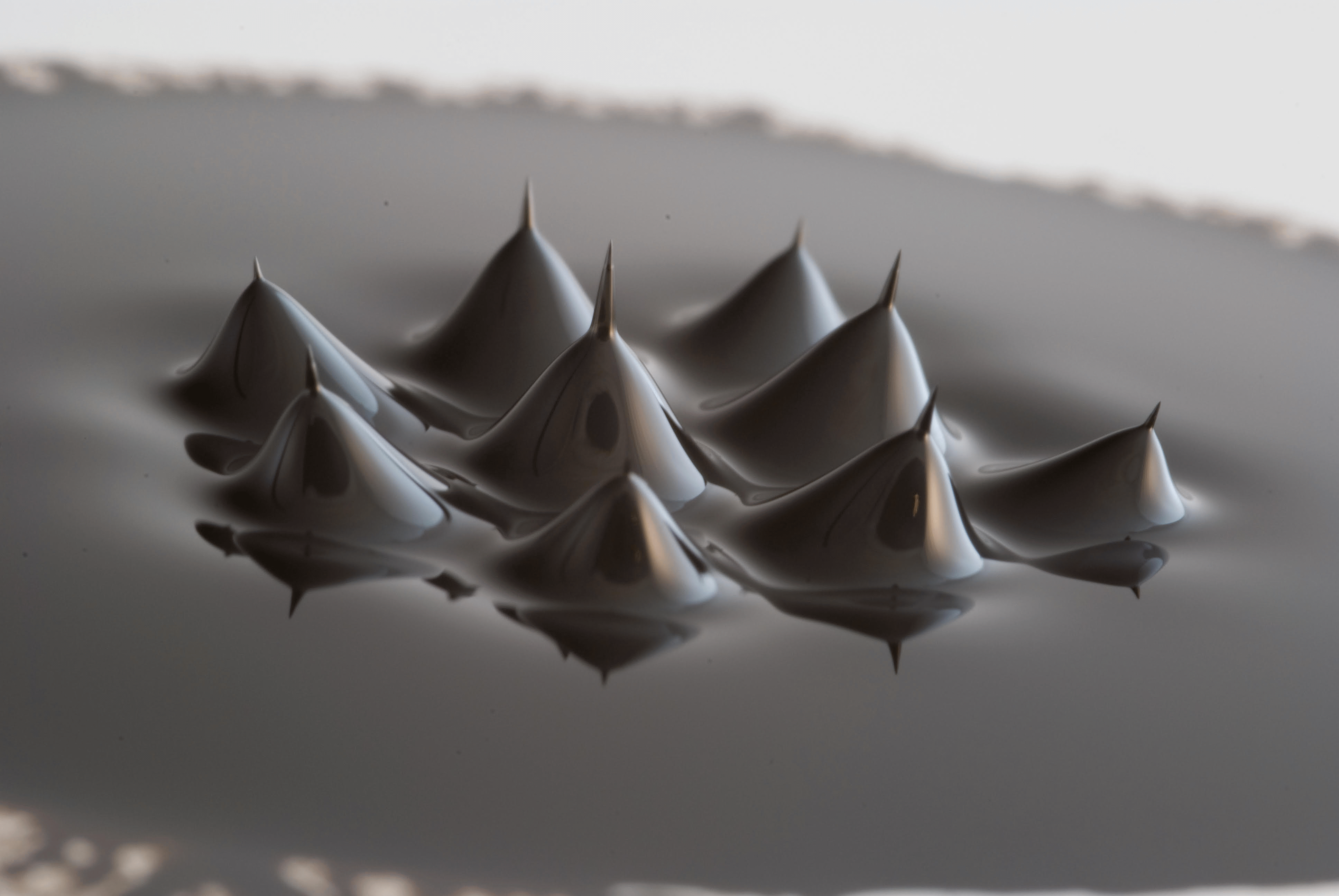
Search this site with the power of
